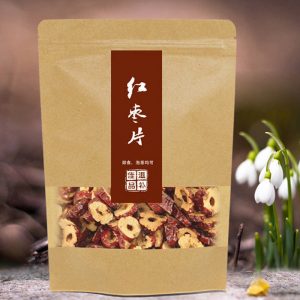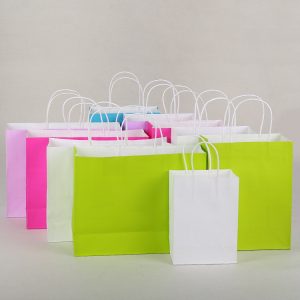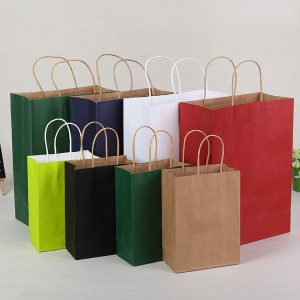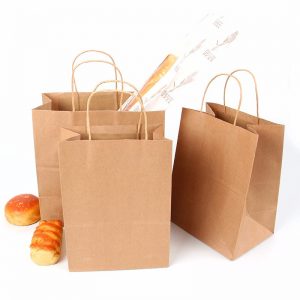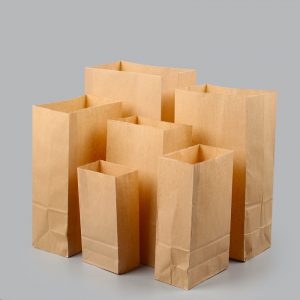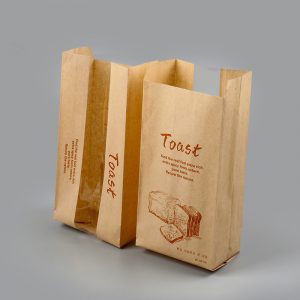In-depth understanding of the production process of laser coated non-woven bags
The laser coated non-woven bag is very popular among companies with high printing quality requirements, and the sparkling effect can give a refreshing feeling. The laser film has many advantages such as unique finishing effect and high anti-counterfeiting, and is deeply loved by printing companies. But printing companies don't know much about the processing of laser films. The production process of the laser film will be described below.
Since the introduction of rainbow laser materials into the market in the late 20th century, in just over a decade, it has been integrated into every corner of packaging and printing, promoting the innovative publication of packaging materials, especially the laser film shines brightly, in tobacco and alcohol, advanced The packaging field of food, medicine, cosmetics, etc. has set off a “colored whirlwind”. In the dazzling world of laser film, the process is from laser coating process, laser transfer printing to laser positioning printing. From the seam laser film to the non-plate laser film, new technologies are emerging and the application forms are more and more diverse.
Although the laser film varies in variety, it does not change its ancestry: no matter what the effect of the laser film, in the production can not be separated from the laser molding plate, pressure laser graphic, coating, slitting, transfer, curing and other processes. This article will highlight some of the key production steps.
Film-coated non-woven film
Production process of laser coated non-woven bag
Vacuum spraying
After the completion of the pressure laser image, if you want to achieve the metal effect, you need to spray a layer of metal foil on the pressed laser image. Here, the vacuum aluminum plating machine is used to pass different wires through the high current in the vacuum container. Atomized, covered on a pressed laser film. The spraying step can be plated with aluminum, chrome plated, nickel plated, plated with copper, iron plated, etc., and can be plated with a matte finish and a bright mirror. The vacuum spraying effect depends on the metal material used.
The process of vacuum spraying is very difficult. Taking vacuum aluminum plating as an example, the publishing dynamics are affected by factors such as voltage, current, vacuum, and material purity. The aluminum plating process may produce quality defects such as aluminum discoloration, splashing, aluminum loss, black spots, spots, and foaming. Affecting the quality of the final laser film, it is easy to cause poor transfer and a large amount of aluminum falling.
After the vacuum deposition process, in order to ensure smooth post-processing, the metal foil must be surface treated to improve printability. There are two main treatment methods: varnish (or paint) and corona treatment. The appropriate treatment can be selected according to the surface properties of the metal foil.
2. Pressure laser graphic
The principle of the pressure laser image is to directly press the laser mold plate on the film substrate or special paint at high temperature to form a light refraction point detection system and instrument with different heights and different sizes. After illumination, the diffuse reflection of different wavelengths of light Will make the laser film shine in the rainbow.
When pressing the laser graphic, you must master the three elements of temperature, speed and tension. If these three elements are not precisely controlled, there will be serious defects such as chromatic aberration, dark spots, white spots, water marks, wrinkles, cloud flowers, pitting, laser graphics and light column deformation. These defects will be given to future printing tapes. It is troublesome and even the laser film can not be put into printing production.
3. Coating
Generally, the laser film has two materials, one is OPP and the other is PET. The former can directly press the laser graphic ticket printing on it, the latter can't. If you want to press the laser image on the PET base film, you must first coat the PET base film with a very thin special coating, and then press the laser image. When coating a special coating, it is necessary to ensure a proper viscosity and to master the coating amount. The coating process should be carried out in a sealed, dust-free, constant temperature, and constant humidity environment.
4. Laser molded version
The laser molded version is the core production part of the laser film. It can be said that the casting level of the laser molded version determines the production quality of the laser film. The cast laser stamping plate is completely different from the plate making process in the printing process, and the requirements are different. The laser molded version is made of special metal foil by special electroforming reaction. The plate has strong hardness and flexibility. It will not deform under high temperature baking, and it can not be seen under the magnifying glass. defect. Therefore, the casting quality of the laser molded version is very demanding, the plate is also very expensive, and a high-strength imported original laser molded version is worth more than one million yuan. The use of the laser molded version also requires great care. There should be no minor collisions during the cleaning and maintenance. There should be no oil or water splashing on the laser molded version; otherwise, the product will be scrapped.
In addition to the above-mentioned common laser lamination technology, laser holographic anti-counterfeiting positioning laser molding technology is also a new high-tech lamination technology in recent years. Different from the ordinary laser film production process, when the laser film is pressed and positioned, the position of the holographic anti-counterfeiting laser printing needs to be calculated before the plate making, the anti-counterfeiting pattern is implanted into a specific position in the laser molding plate, and then the laser positioning molding is performed. . In this way, when the laser holographic positioning laser film is transferred, the anti-counterfeiting laser pattern can be transferred to the same position on the surface of the printed product.
With the innovation of laminating technology, the laser film without metallization is available, and the transfer process has also been innovated, and the cold transfer process has attracted attention. Cold transfer is suitable for laser films that do not spray metal layers, and can be used repeatedly for multiple times. It can achieve partial laser effect, and can also achieve full-page laser effect. The device is simpler and the ink adhesion fastness after printing is good.
It is worth noting that the production of laser film is a precise, precise and precise process control process, which has strict requirements on the conditions of the production workshop. For example, constant temperature, constant humidity, smokeless, dust-free, no convection, air must be filtered twice. Operators must change work clothes before entering the workshop. Machines and floors must meet special sanitary cleaning standards.
The emergence of a non-stitched laser film
When using carton paper to produce cartons, the biggest headache for carton companies is how to avoid the seams on them and reduce waste. With the development of technology, molding technology has become more and more mature, and now there is no seam laser film.
The seam is the stitching gap between the laser stamping plates or the mating gap created after the plate is applied. Grating during molding, under the action of high temperature and pressure, the laser pattern will be pressed onto the film to form a rainbow effect, and black lines will naturally form at the gaps without the laser pattern. In continuous production, each time the laser plate roll is rotated, a black line with no laser text is generated. The larger the gap, the larger the black line. This causes great trouble for the subsequent printing production of the laser coated non-woven bag, and if the seam happens to fall on the package, waste will be generated. In order to reduce the loss and improve the printing yield of the laser film, after years of research and development, the non-stitching and laminating technology (interlaced by the double-mode double-pressure technology) has emerged as the times require, and is increasingly applied to batches. In production, good results have been achieved. However, the current non-stitched laser film is mainly used in cigarette package printing, and is less used on other product packaging.
For more information about Non-woven bags, please pay attention to sinceyoungpackage, if you have any comments on our information, welcome feedback






